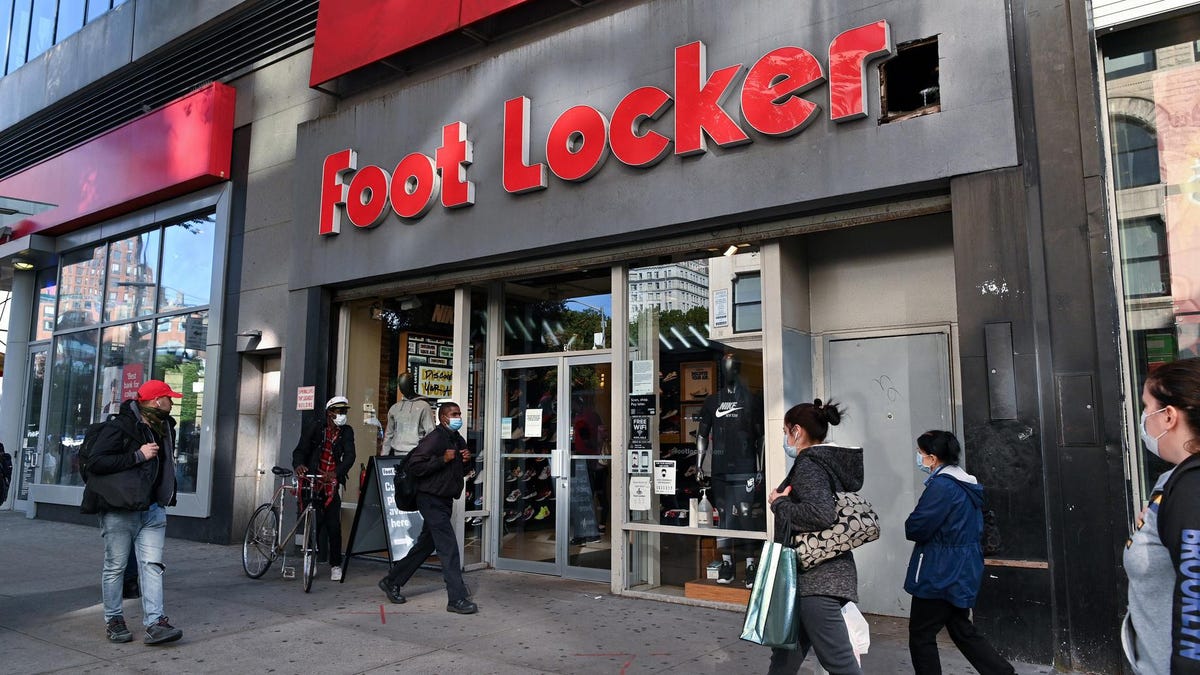It’s tough to figure out whether Foot Locker’s latest results make it a flat-track winner, or a middle-distance plodder.
On the one hand, the figures paint a pretty positive picture. Foot LockerFL announced on March 20 that net sales for the year 2022 nudged up 0.9% to $8.75 billion compared to 2021, after a solid fourth quarter which was notable for strong same-store comps.
While sales for the New York-based company for the quarter ending Jan. 28 decreased by 0.3%, to $2.33 billion, comparable-store sales grew an encouraging 4.2%, which was driven by increased traffic and better inventory management.
Amid all the uncertainty, that’s pretty solid running.
However, net income dived to $19 million, compared to $103 million in the fourth quarter of fiscal year 2021. The company responded by revealing its new ‘Lace Up’ strategic plan for fiscal 2024-thru-2026 and a “revitalized” love-in with sneaker giant Nike.
So far, it’s been nicely paced as it comes around the final corner. So how come UBS downgraded the retailer to ‘sell’, noting that the company will struggle in the event of a recession?
That’s probably because the figures present a confusing mix.
Let’s start with Lace Up. Foot Locker wants to “expand sneaker culture” and “serve more sneaker occasions”, meaning increasing choice, and drive to its brand portfolio by creating more distinction among banners, including re-launching the Foot Locker brand, opening new formats, shifting off-malls, and closing underperforming stores.
Foot Locker To Close 400 Stores
Of the latter, it clearly means business. As of Jan. 28, 2023, the company operated 2,714 stores in 29 countries in North America, Europe, Asia, Australia, and New Zealand, plus 159 franchised stores in the Middle East and Asia.
During the fourth quarter, Foot Locker opened 21 new stores, remodeled or relocated 45, and closed 101 stores. There are 400 more store closures to come, as the shopping center staple earmarks the shuttering of around 200 stores in class C and D category malls and 200 more in lower-performing A and B malls.
Less reported upon, as part of its efforts to “simplify” its business model and focus on core banners and regions, Foot Locker will close its stores and e-commerce in Hong Kong and Macau; convert its current owned-and-operated stores and e-commerce in Singapore and Malaysia to a license model (which will be the future growth model); but maintain its stores in South Korea.
Indonesian lifestyle retailer MAP Active, which already partners with the company in Indonesia and the Philippines, will also take over Foot Locker’s operations in Singapore and Malaysia.
In other words, Foot Locker is ditching its business model in Asia and replacing it with franchise partners, which means less risk, but also less control.
Lace Up Strategy
“We are entering 2023 with a focus on resetting the business – simplifying our operations and investing in our core banners and capabilities to position the company for growth in 2024 and beyond,” Mary Dillon, president and CEO, said about the results.
She also stressed that the company’s relationship with Nike has been “revitalized”, with the world’s largest sports brand expecting to account for 55-60% of the sneaker chain’s mix over the next few years.
“I have spent a great deal of time with Nike, revitalizing our partnership, developing a shared vision of the future marketplace, aligning on growth plans in key strategic areas like basketball, kids and sneaker culture,” Dillon said, at the recent Investor Day.
That means global promotions, access to premium footwear products, and in 2024, a collaboration to mark Foot Locker’s 50th anniversary.
At the same time, other footwear vendors are expected to increase to over 40% of Foot Locker’s mix by 2026, notably Adidas, New Balance, Puma, Hoka, On and Crocs. Other priorities include increasing casual and performance offerings, plus exclusives.
The upshot is that for fiscal 2024 to 2026, Foot Locker expects total sales growth of 5-6%, and comparable sales growth of 3-4%. Those are not necessarily stellar targets and the Asian realignment is significant.
However, it’s a mature and discretionary category and Dillon previously led high flying, Ulta BeautyULTA, so if anyone knows where the sneaker hits the ground it’s likely her.
Follow me on Twitter or LinkedIn. Check out my website.
